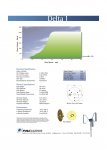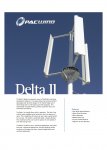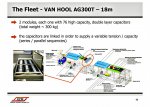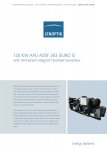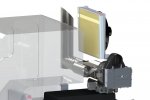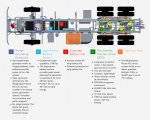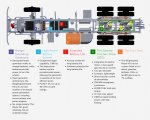..
Sorry Bio, but I immediately thought of Terrliner when I saw this:


Hi
Iain:
That image is a hoot!!! :wings:
..No need for an apology.
I am always fascinated by what one might describe as the "argumentative shorthand" of images, their capacity to sum up a complex line of argument using no words whatsoever. Or, in the case of humorous images labeled with terse one-liners, their ability to state something so powerfully with just five words.
So when I see an undeniably
very funny image like this one, after having a good laugh my brain kicks in, and I want to know
why it's so darn funny. This image is worth pondering, for what it might say about the efficacy (or possibly the lack thereof....) of the TerraLiner.
There is a huge literature on why jokes are funny, the anthropology of humor, and the social and psychological function of laughter -- see for instance
http://www.npr.org/sections/health-...ks-into-a-bar-and-asks-why-is-this-joke-funny ,
https://en.wikipedia.org/wiki/Joke ,
https://en.wikipedia.org/wiki/Laughter , and
https://en.wikipedia.org/wiki/Slapstick . But one basic truism about humor has always struck me: that many jokes, even visual ones, depend on pain. We laugh because others feel pain. There is a certain inescapable current of sadism animating much or even most humor; we often do laugh at other people's expense.
This is most obvious in the case of slapstick humor, for instance "
Roadrunner" cartoons where the hapless coyote gets repeatedly splattered and squashed. Sure, there's a Sisyphean quality to the coyote's endless struggle with the Roadrunner, and we laugh because the coyote is so full of pride and self-confidence, and always gets his comeuppance at the hands of the happy-go-lucky Roadrunner. But we also laugh because the coyote suffers -- see
https://en.wikipedia.org/wiki/Wile_E._Coyote_and_The_Road_Runner and
https://www.youtube.com/playlist?list=PLL3uNn7f3npgkXGEU71mZSlb31vki3v-J :
Ethnic and class-based jokes then combine this sadistic element in humor with a bid to consolidate and re-affirm in-group class-identity and/or ethnic identity. So
Iain, your image of a redneck motorhome conversion is funny because it says something about RV owners, as well as something about those who do
not own RVs. Your image very clearly suggests that the upper and professional classes tend to think of RV vacationing as a rather low-brow, lower-middle-class or working-class sort of hobby. And it probably is.
In Europe those born into aristocratic or "grand bourgeois" family backgrounds will vacation in hotels or on yachts, meaning that they will vacation in such a way that other people can be paid to do the menial labor, i.e. the cooking and the cleaning. Whereas an RV vacation by definition means that somebody in the family (usually the wife) won't have much of a vacation at all, because she'll still have to cook and clean.
This image combined with a one-liner is then funny because it suggests that even when working-class or "trailer trash" types win the lottery, they still cannot escape their class background, as evidenced by the limited scope of their fantasy life and aesthetic taste. Their "dream home" is merely a trailer-park house on really
big wheels, a ridiculous-looking cross between a conventional motorhome and the huge wheels + lift kit of a monster truck. The "aspirational fantasies" of this vehicle's owners still identify them as thoroughly lower class and redneck. Whereas if they had been born into money instead, they would never be fantasizing in this way, or so the image claims.
Here I am reminded of the current of humor that runs throughout
The Beverley Hillbillies show -- see
https://en.wikipedia.org/wiki/The_Beverly_Hillbillies :
The shows' characters are lovably immune to the monetary and prestige value of the luxury that surrounds them, and they often misinterpret the function of objects of conspicuous consumption. For instance, they misinterpret their mansion's swimming pool as a convenient pond where they fetch water using buckets, even though their mansion has perfectly good plumbing. Again, this is only humorous because we -- who presumably are
not redneck Hillbillies -- experience a certain sadistic joy in knowing that you can take the Hillbilly out of the Ozarks, but you can't take the Ozarks out of the Hillbilly. We get to feel smugly secure in our class privilege, knowing that money alone will not enable such people to escape the aspirational "prison" and the bad taste of their class background. They will still have bad taste and a limited fantasy life, no matter how much money they stumble into.
Your image of a ridiculous motorhome conversion plays a similar game, allowing those of us who are members of the upper and professional classes to feel secure in the knowledge that there are cultural and educational "barriers to entry" that constitute our class-identity, barriers that no lottery win can erase. We can rest secure in the knowledge that the club that we belong to is a closed shop, and no mere lottery win will gain the
hoi poloi access.
********************************************
Stepping back, I then find myself asking why RV vacationing should tend to have such déclassé connotations.
I am not the only person who asks this question. The entire RV industry constantly asks itself this question, because in Europe in particular, RV sales across all categories are steadily declining. As people become wealthier and have more disposable income for vacations, they tend to want to spend those vacations in hotels, and not in RV campgrounds. But oddly enough sailboats, no matter how small, have always been perceived as "upscale" and prestigious. And yet at the level of day-to-day functionality, there's not that much difference between a 50 foot sailboat and a 45 foot Class-A motorhome. Neither one is large enough to have crew quarters, and if a couple retires on a 50 foot sailboat, the wife will probably still find herself doing most of the cooking and cleaning. But somehow cruising around in a 50 foot yacht is widely perceived as a refined, quasi-aristocratic form of retirement, whereas driving around in a 45 foot Class-A is not necessarily so.
Hence, one of the goals in TerraLiner design that I've set myself is precisely to challenge such stereotypical cultural and class connotations. As the architect Matthew Hoffman so eloquently suggests in the following videos, living in a motorhome or a trailer can be and should be reimagined as the very pinnacle of luxury, because one enjoys a freedom not available to those who are tied to a fixed home (or even a second vacation home), lodged in just one place:
[video=vimeo;55262732]https://vimeo.com/55262732[/video]
Also see post #217 at
http://www.expeditionportal.com/for...igid-Torsion-Free-Frame?p=1583938#post1583938 .
Unfortunately, especially in the United States, living in a trailer or a motorhome tends to be perceived as thoroughly déclassé.
So I ask myself: would your image be so funny if the vehicle were not so darn ugly? The problem isn't so much with the vehicle type per se, i.e. a very large RV
. Rather, what screams
"lower-class redneck" is the fact that this conversion is so ugly, and is merely a jerry-rigged amalgam of parts put together as a self-build. If this vehicle were not such a self-built automotive collage, and if instead it had been beautifully designed from scratch and had harmonious proportions, would the humorous one-liner still work? The mere fact that it's a self-build also signals the limited aspirational capacity of its redneck owners: they still insisted on designing and building it themselves. If they had in fact won the lottery, they could have paid someone else to do the work, and do a much better job. But because they are lower-class and redneck, as a matter of life-long habit they are aspirationally stuck in a culture of "do-it-yourself" and "self-build". Or so the image with the humorous one-liner added would suggest.
Here is a visual experiment: just substitute a photo of a Newell coach, and the humor vanishes. The one-liner no longer works:

Of course the one-liner also doesn't work with this photo because the Newell pictured is parked in front of a beautiful house, complete with two cars; a house that signals something to the effect,
"We own and live in a Newell coach by choice, not out of economic necessity. We could live in a more regular kind of house if we wanted to. We are not economically desperate trailer park trash!!! But we choose to live in the Newell, and just to prove it, notice our immaculately trimmed lawn. We can pay for a gardening service, but again, we choose to live in a motorhome."
In any case, I hope the above analysis was not too deflationary. The image that you posted,
Iain, is very funny, and I am glad that you posted it. But I've also been trained to "deconstruct" images and their implicit messages, so I could not resist wanting to take it apart, asking why it works, and what it actually says.
All best wishes,
Biotect




